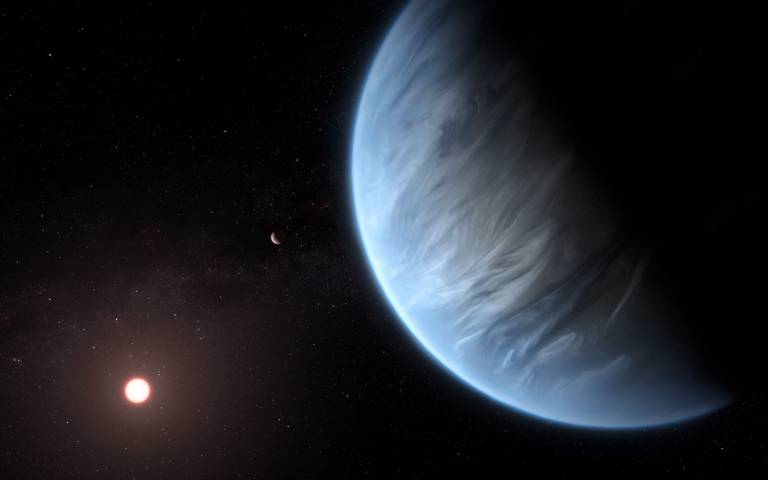K2-18b, which is eight times the mass of Earth, is now the only planet orbiting a star outside the Solar System, or “exoplanet”, known to have both water and temperatures that could support life.
The discovery, published in Nature Astronomy, is the first successful atmospheric detection for an exoplanet orbiting in its star’s “habitable zone”, at a distance where water can exist in liquid form.

Credits: ESA/Hubble, M. Kornmesser
Finding water in a potentially habitable world other than Earth is incredibly exciting. K2-18b is not “Earth 2.0” as it is significantly heavier and has a different atmospheric composition. However, it brings us closer to answering the fundamental question: Is the Earth unique?
The team used archive data from 2016 and 2017 captured by the ESA/NASA Hubble Space Telescope and developed open-source algorithms to analyse the starlight filtered through K2-18b’s atmosphere. The results revealed the molecular signature of water vapour, also indicating the presence of hydrogen and helium in the planet’s atmosphere.
The authors believe that other molecules including nitrogen and methane may be present but, with current observations, they remain undetectable. Further studies are required to estimate cloud coverage and the percentage of atmospheric water present.
The planet orbits the cool dwarf star K2-18, which is about 110 light years from Earth in the Leo constellation. Given the high level of activity of its red dwarf star, K2-18b may be more hostile than Earth and is likely to be exposed to more radiation.
K2-18b was discovered in 2015 and is one of hundreds of super-Earths – planets with a mass between Earth and Neptune – found by NASA’s Kepler spacecraft. NASA’s TESS mission is expected to detect hundreds more super-Earths in the coming years.